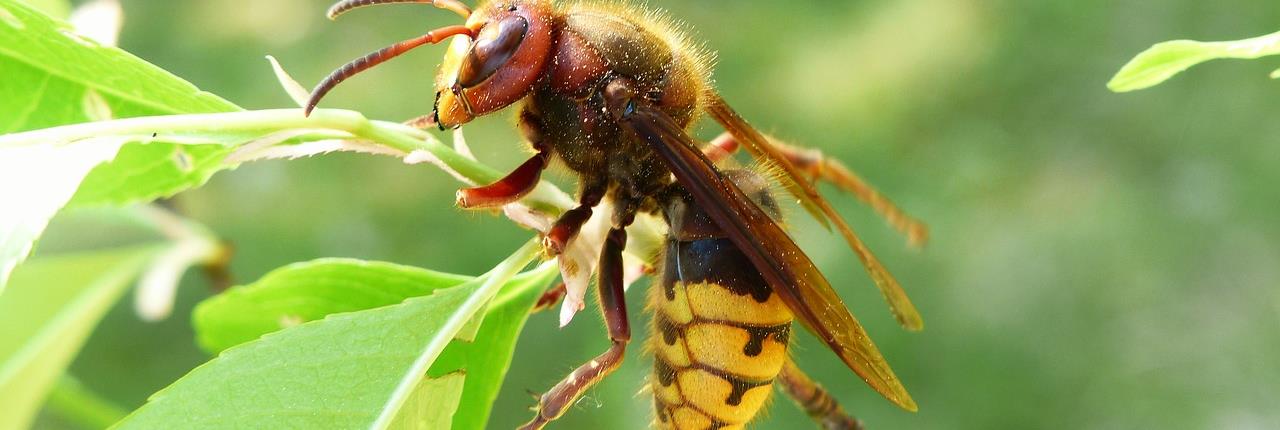EUROPEAN HORNETS LONG ISLAND, NEW YORK
European Hornets are sometimes referred to as brown or giant hornets. European Hornets have a robust body and are the largest eusocial wasps native to Europe and introduced to North America by European settlers in the 1800s. European Hornets were initially discovered in New York and are now found in thirty states in the United States. Their range extends from the northeastern United States west to the Dakotas and south to Louisiana and Florida. The European hornet is the only true hornet existing in North America. European hornet workers measure one inch in length, while queen hornets can reach 1½ inches. European hornets are easily discriminated from other hornets and wasps by the reddish-brown top and sides of their heads. The bald-faced hornet has a black head with white markings, while yellowjackets have a black head with yellow markings. The European hornet wings are a reddish-orange color, while the abdomen is yellow with black stripes. European hornets build a paper-like nest using plant materials they obtain by stripping the bark from trees and shrubs. European hornet nests are typically located in dark enclosed spaces that are six feet or more above ground. Nests of European hornets can be found in hollow trees, thatched roofs, sheds, barns, attics, and wall voids of Long Island residences. Female European hornets protect their colony and will sting a perceived intruder repeatedly when their nest is threatened. They can also exhibit aggressive behavior near food sources. These hornets are essentially predatory and hunt moths, dragonflies, grasshoppers, crickets, mantises, wasps, flies, yellow jackets, bees, and beetles. However, in the latter part of the summer and fall, these hornets can be found in orchards feeding on ripening or fallen fruit. In contrast to other wasps, European hornets are often active at night.
EUROPEAN HORNET LIFE CYCLE NASSAU COUNTY, LONG ISLAND
In the spring, the European hornet queens will begin nest construction and lay a small clutch of eggs, which will produce sterile female workers. Once the first brood of hornets emerges, the queen's duties are limited to laying eggs. Worker hornets collect food and nesting material, expand the nest, feed the developing hornet larvae, and defend the nest. The average European hornet nest will have two hundred to four hundred workers but may consist of as many as a thousand workers. In August through November, the hornet nest gives rise to Drones and queens, which leave the nest in the fall to mate. Drones are incapable of stinging. On Long Island, only newly-mated European queen hornets survive the winter; the old queen, workers, and drones will die. The new European hornet queens hibernate in protected areas such as under bark, in rotting stumps, rocks, shingles, attics, or abandoned rodent burrows. The newly fertilized queen European hornets will emerge the following spring to repeat the cycle.
EUROPEAN HORNET NEST REMOVAL - LONG ISLAND, NEW YORK
Getting rid of a European hornet nest can be both difficult and hazardous. Without the expertise, equipment, and pesticides, removing a European hornet nest from your Long Island home or business is an endeavor that is destined to fail. Therefore, you should contact the European hornet nest removal experts at Long Island Bee Removal for professional exterminating services. Our Long Island hornet removal specialists have a substantial knowledge of hornet control methods and many years of experience locating and safely removing European hornet nests.






